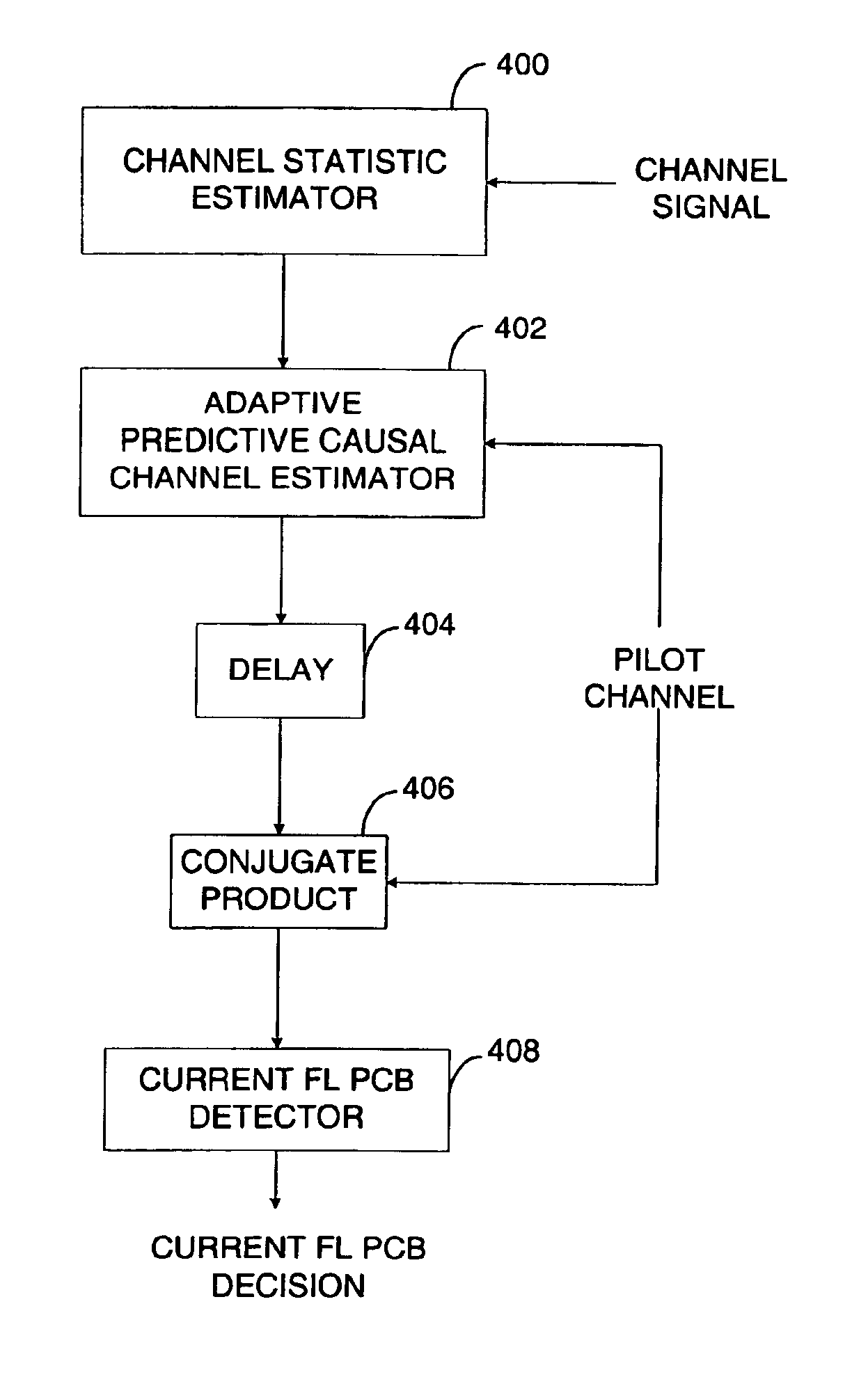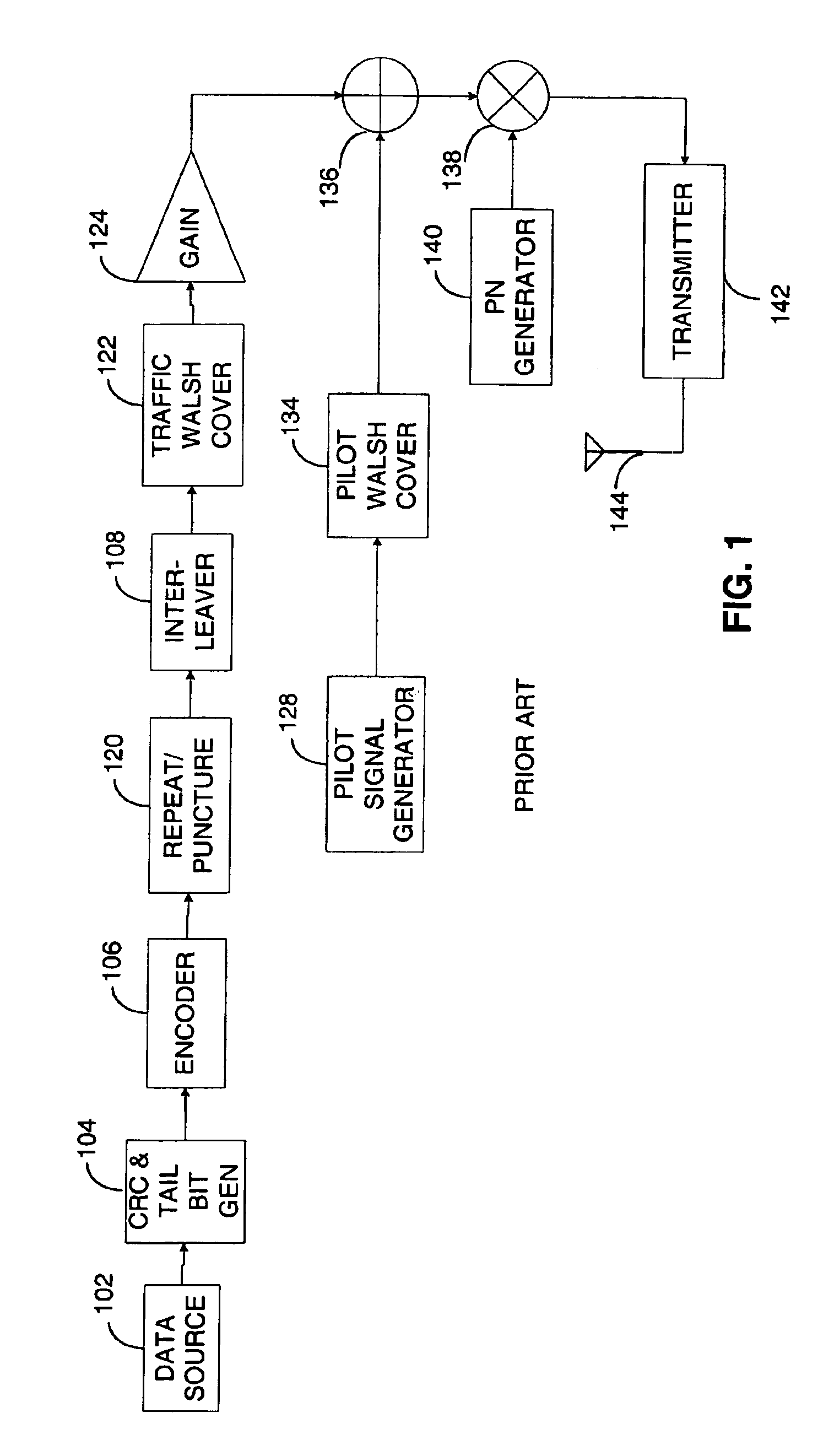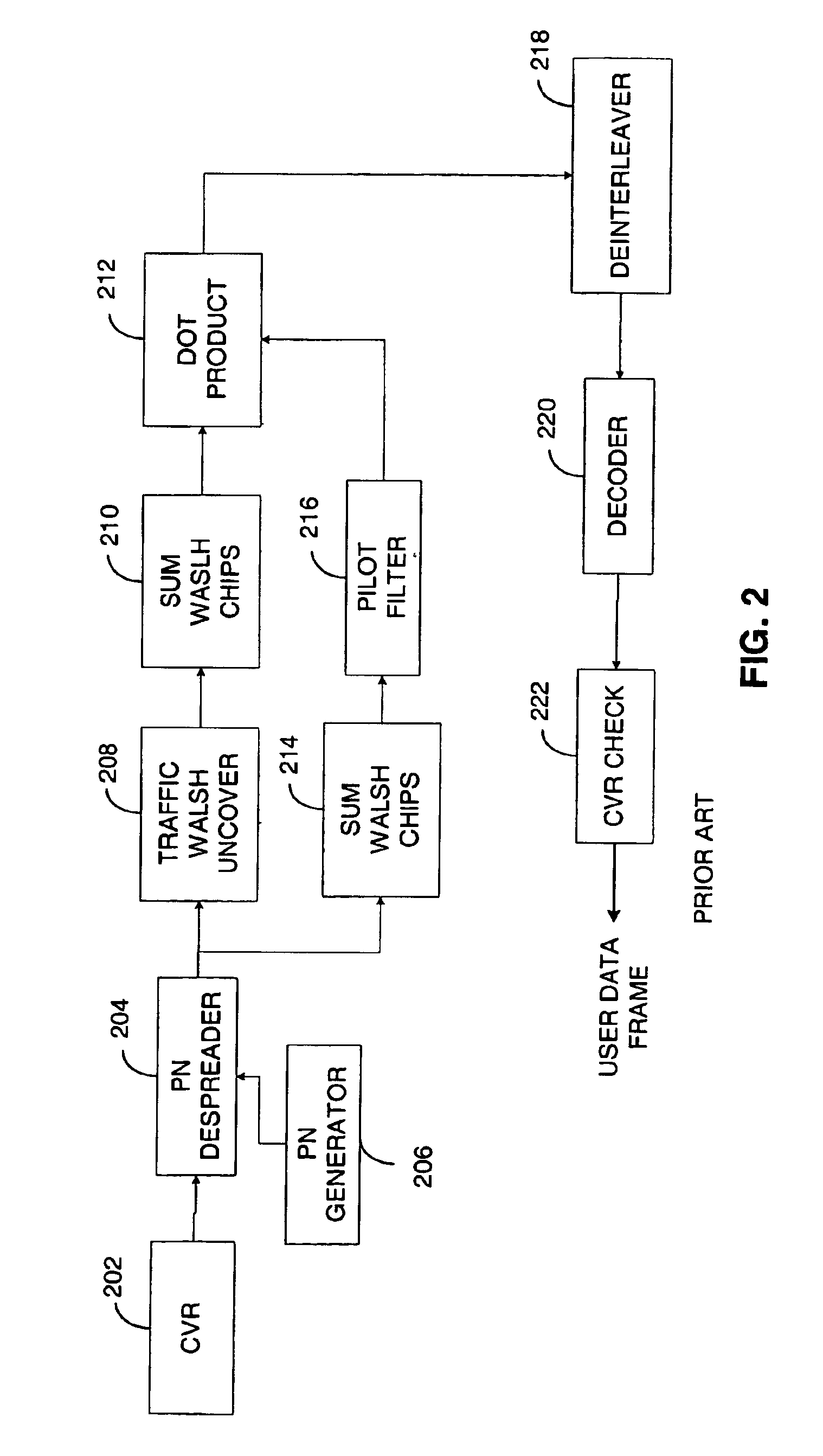Adaptive channel estimation in a wireless communication system
- Summary
- Abstract
- Description
- Claims
- Application Information
AI Technical Summary
Benefits of technology
Problems solved by technology
Method used
Image
Examples
first embodiment
[0034]Turning now to FIG. 3, the present invention is illustrated as being implemented in a cdma2000 reverse link traffic channel demodulator. Channel statistic estimator 300 estimates channel statistics which are used by adaptive non-causal channel estimator 302 to adaptively filter the pilot channel as will be discussed in more detail below. It should be noted that in other embodiments, indeed in the embodiment of FIG. 4 described below, an adaptive causal channel estimator or filter may be used in place of adaptive non-causal channel estimator 302. However, in the embodiment of FIG. 3, a non-causal filter is used for channel estimation due to its improved performance over a causal filter when the delay of the non-causal filter is tolerable. In the exemplary embodiment of FIG. 3, adaptive non-causal channel estimator 302 is an FIR filter. However, in the general case, adaptive non-causal channel estimator 302 may be an IIR filter or a hybrid filter with both FIR and IIR characteri...
second embodiment
[0040]Turning now to FIG. 4, the present invention illustrated as being implemented in a forward link power control bit demodulator. In FIG. 4, channel statistic estimator 400, which may be the same as channel statistic estimator 300 of FIG. 3, is illustrated as receiving the channel signal, which may be the reconstructed channel signal of FIG. 3 in the case of a the R-PICH demodulator of FIG. 3, or a reconstructed channel signal from a sign-corrected traffic channel after successful decoding, re-encoding, and re-interleavi g as detailed in the above-referenced U.S. Pat. No. 6.452,917, or a weighted combination of the two signals. In the general case, channel statistici estimator 400 may be different than channel statistics estimator 300. Both may use essentially the same algorithm, described in detail below, but they may operate on different data, or over different time slots, or even different channel signal inputs. The channel signal is operated on by channel statistic estimator ...
PUM
 Login to View More
Login to View More Abstract
Description
Claims
Application Information
 Login to View More
Login to View More - R&D
- Intellectual Property
- Life Sciences
- Materials
- Tech Scout
- Unparalleled Data Quality
- Higher Quality Content
- 60% Fewer Hallucinations
Browse by: Latest US Patents, China's latest patents, Technical Efficacy Thesaurus, Application Domain, Technology Topic, Popular Technical Reports.
© 2025 PatSnap. All rights reserved.Legal|Privacy policy|Modern Slavery Act Transparency Statement|Sitemap|About US| Contact US: help@patsnap.com



